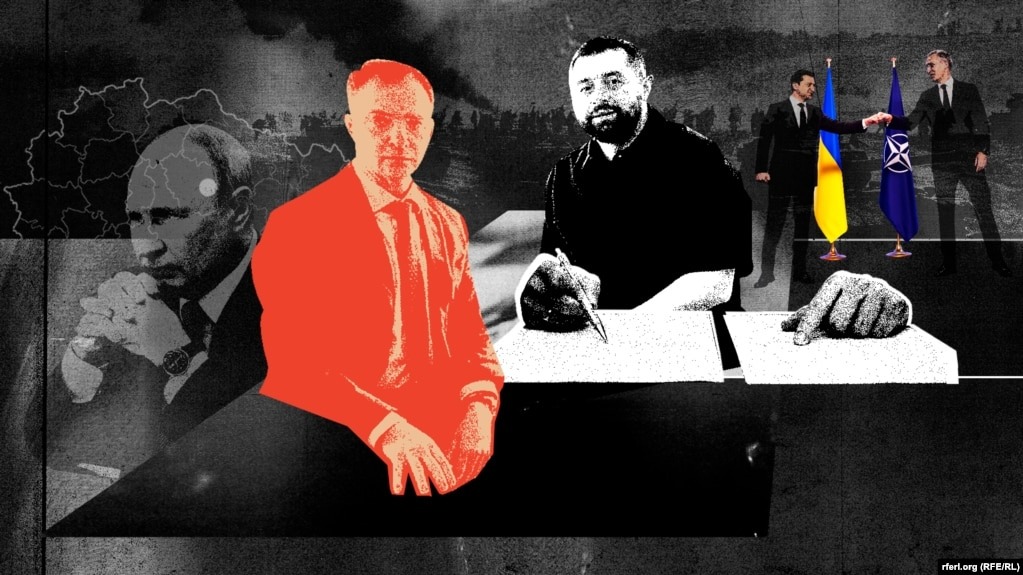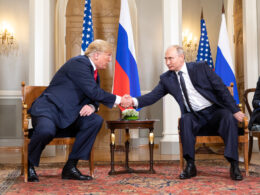The war has now entered its third year, with no clear path to resolution and no indication of potential peace negotiations between Russia and Ukraine in 2025 or beyond. Meanwhile, Russia's overarching demands for Ukraine’s de facto capitulation remain unchanged.
On 28 February 2022, just four days into Russia’s full-scale invasion, Moscow and Kyiv began negotiations. Multiple rounds followed, but the talks collapsed a month later when Russia failed to capture Kyiv or force Ukraine's surrender, retreating and leaving behind a trail of war crimes, including the mass murder of civilians in Bucha near the capital.
The Kremlin-drafted agreement is titled the "Treaty on the Settlement of the Situation in Ukraine and Ukraine's Neutrality." It was presented to the Ukrainian delegation on 7 March 2022, in Belovezhskaya Pushcha, Belarus, during the third round of negotiations, according to RFE/RL. This occurred just 11 days after Russia launched its full-scale invasion and a week after negotiations began.
The six-page document with four pages of appendices, verified by Russian and Ukrainian sources familiar with the negotiations who spoke to RFE/RL on condition of anonymity, contained 18 articles covering military restrictions, international obligations, borders, and humanitarian issues.
The proposal demands Ukraine slash its military to 50,000 personnel, with only 1,500 officers—one-fifth of its pre-2022 size and smaller than Belarus’s army, despite Ukraine’s much larger population. Ground forces are capped at 35,000, according to RFE/RL.
"The document was structured as if Ukraine was the aggressor who had been defeated on the battlefield, which certainly didn't reflect reality," Ciaramella, a senior fellow at the Carnegie Endowment's Russia and Eurasia Program, told RFE/RL.According to the document, Russia demanded Ukraine limit its military equipment to four ships, 55 helicopters, and 300 tanks. The proposal prohibited Ukraine from developing or acquiring missiles with ranges exceeding 250 kilometers – the distance between the Crimean Bridge and Ukrainian-controlled Huliaipole near the frontline. Moscow also reserved the right to ban "any other types of weapons that may be developed through scientific research."
The demands
The agreement would have required Ukraine to recognize the independence of the Donetsk and Luhansk oblasts within their full administrative borders, despite Russia only controlling portions of these territories at the time. Ukraine would also have to bear the costs of rebuilding these regions' infrastructure damaged since 2014, in most cases by Russia. RFE/RL says that the proposal demanded Russian language become a state language and the restoration of property rights for the Ukrainian Orthodox Church (Moscow Patriarchate). It also required the lifting of all sanctions - Ukrainian and international - against Russia and withdrawal of all international lawsuits filed since 2014. The draft’s authors demanded Ukraine “repeal and permanently prohibit any bans on symbols associated with the victory over Nazism,” effectively calling for the re-legalization of Soviet and communist symbols in Ukraine. The document called for canceling laws Russia deemed examples of "Nazification and heroization of Nazism," including, notably, laws "On Perpetuation of Victory over Nazism" and "On Rehabilitation of Victims of Communist Totalitarian Regime Repressions." Meanwhile, the document completely omitted any mention of Russian troop withdrawal from Ukraine.Later versions
Later drafts dated 17 March and 15 April 2022, published by The New York Times, showed some compromise, RFE/RL reports. Crimea's status was left for future negotiations, and language and historical issues became less prominent. Security guarantees involving Western countries were discussed, though their implementation remained contentious. The sides still disagreed on army size – Ukraine insisted on 250,000 troops (its pre-invasion level), while Russia proposed 85,000. Some demands proved obviously unworkable, such as Russia's request for Ukraine to restore water supply to Crimea while Russian forces controlled the canal area. By September 2022, Russian President Vladimir Putin had escalated his demands, declaring five Ukrainian regions – Crimea, Donetsk, Luhansk, Zaporizhzhia, and Kherson – as integral parts of Russia, including areas still under Kyiv's control."Putin seemed to seek something more radical – not neutrality, but neutralization of Ukraine as an independent state," Ciaramella said, adding that "Russia's goal from the start was to destroy Ukraine's ability to defend itself."The proposed Russian agreement reveals President Vladimir Putin’s invasion goals, from which he has not publicly wavered. Acceptance would reduce Ukraine to a puppet state with nominal neutrality, a token military, no NATO protection, and no path to reclaim Crimea or the Donbas. Related:
- CNN: Putin unlikely to negotiate regardless of US election outcomeZelenskyy sees key role for India in peace talks with Russia to end warBoth Kyiv and Moscow deny FT report on talks about halting energy strikes
- No NATO aspirations and freezing occupied Crimea for 15 years: Ukrainian position at talks with Russia (2022)
- Russian FM Lavrov claims Russia will continue hostilities until Ukraine’s capitulation – ISW (2022)
- Putin’s peace talks ruse: why the West should listen to Ukraine (2022)
- Russia’s war is speeding up the Ukrainization of Ukraine





